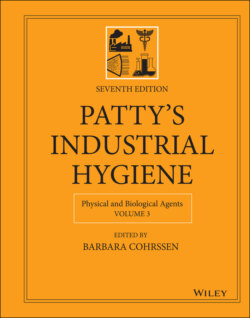Читать книгу Patty's Industrial Hygiene, Physical and Biological Agents - Группа авторов - Страница 91
6 LASER BEAM MEASUREMENTS
ОглавлениеTo those in radiation protection, it is at first somewhat surprising to learn that instrumentation and measurements are not the focus of laser safety. Laser measurements often require sophisticated equipment and fortunately are seldom essential for laser hazard evaluation, since the manufacturer must classify the laser product, and as noted above, actual use of the MPEs (ELs) is infrequent (8, 9, 20).
Unlike some workplace hazards, there is generally no need to perform measurements for workplace monitoring of hazardous levels of laser radiation. Because of the highly confined beam dimensions of most laser beams, the likelihood of changing beam paths and the difficulty and expense of laser radiometers, current safety standards emphasize control measures based upon hazard class and not workplace measurement (monitoring). Measurements must be performed by the manufacturer to assure compliance with laser safety standards to assure proper hazard classification. Indeed, one of the original justifications for laser hazard classification related to the great difficulty of performing proper measurements for hazard evaluation.
In this regard, MPEs are exposure limits measured at the points in space where individuals are potentially exposed and are used for occupational safety and health assessments. ACGIH has published and revised laser threshold limit values™ (TLVs) since the late 1960s, and ANSI Z136 has incorporated MPEs since 1973. On the international scene, guidelines for human exposure originate from ICNIRP. The IEC product‐safety committee, IEC TC76, has gone on record on a number of occasions over the last 20–30 years that it recognizes WHO and ICNIRP as the source of the MPEs. IEC develops product safety standards that regulate emission and employ AELs, which are derived by IEC from the MPEs and other considerations.
When considering potential health hazards, it is always crucial to establish the output wavelength or wavelengths (9). If for some reason there is a doubt about whether more than one wavelength is being produced in a laser operation, one can simply place a prism at the output aperture of the laser and look for indications of secondary beams on a white target card if the power is sufficiently low (e.g. below 5 mW) to visualize without eye protection. UV and blue laser lines would be visible by fluorescence from the white paper even through eye protection, but IR lines would be visible only with very special phosphor cards or an IR image converter.
